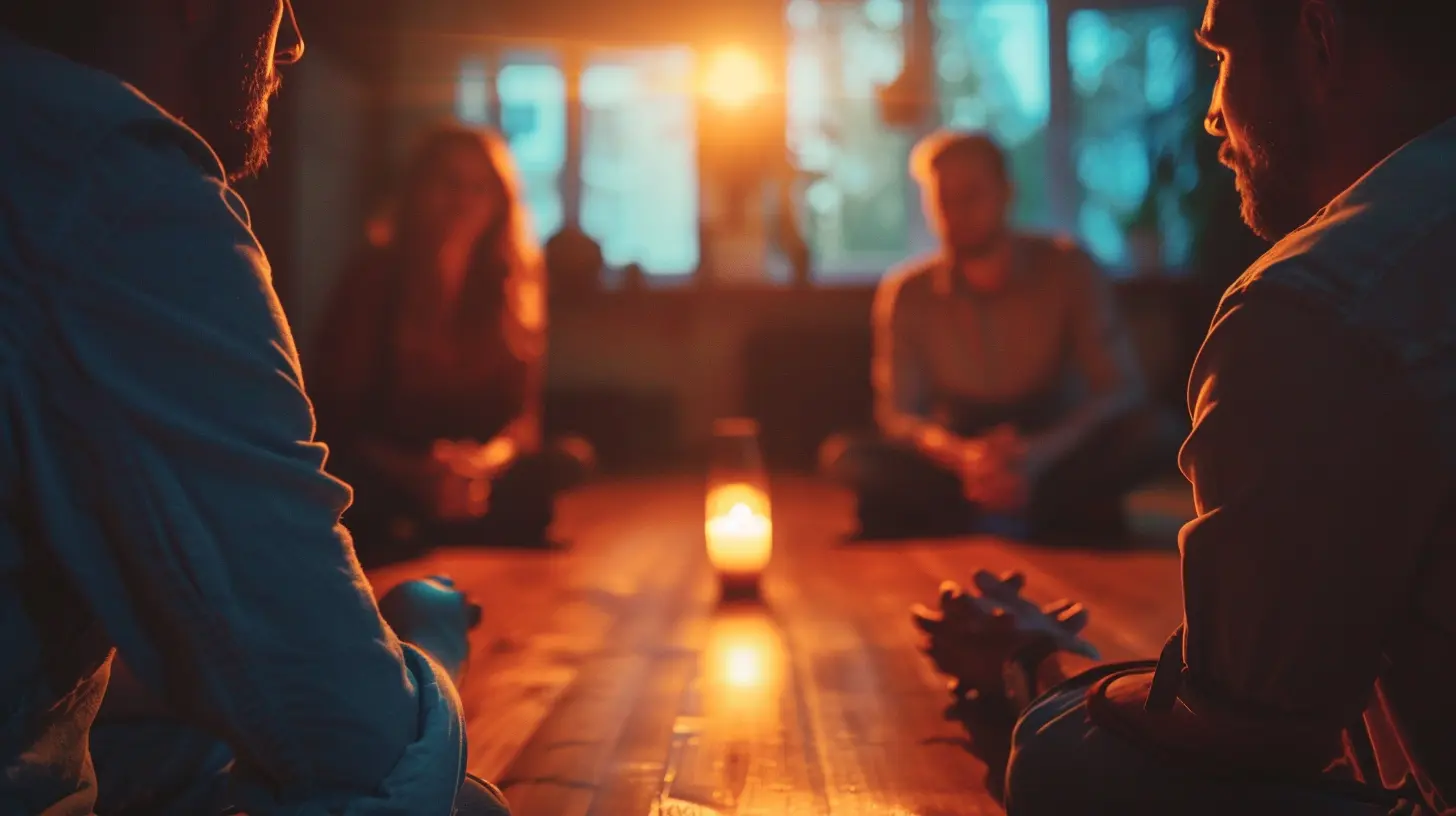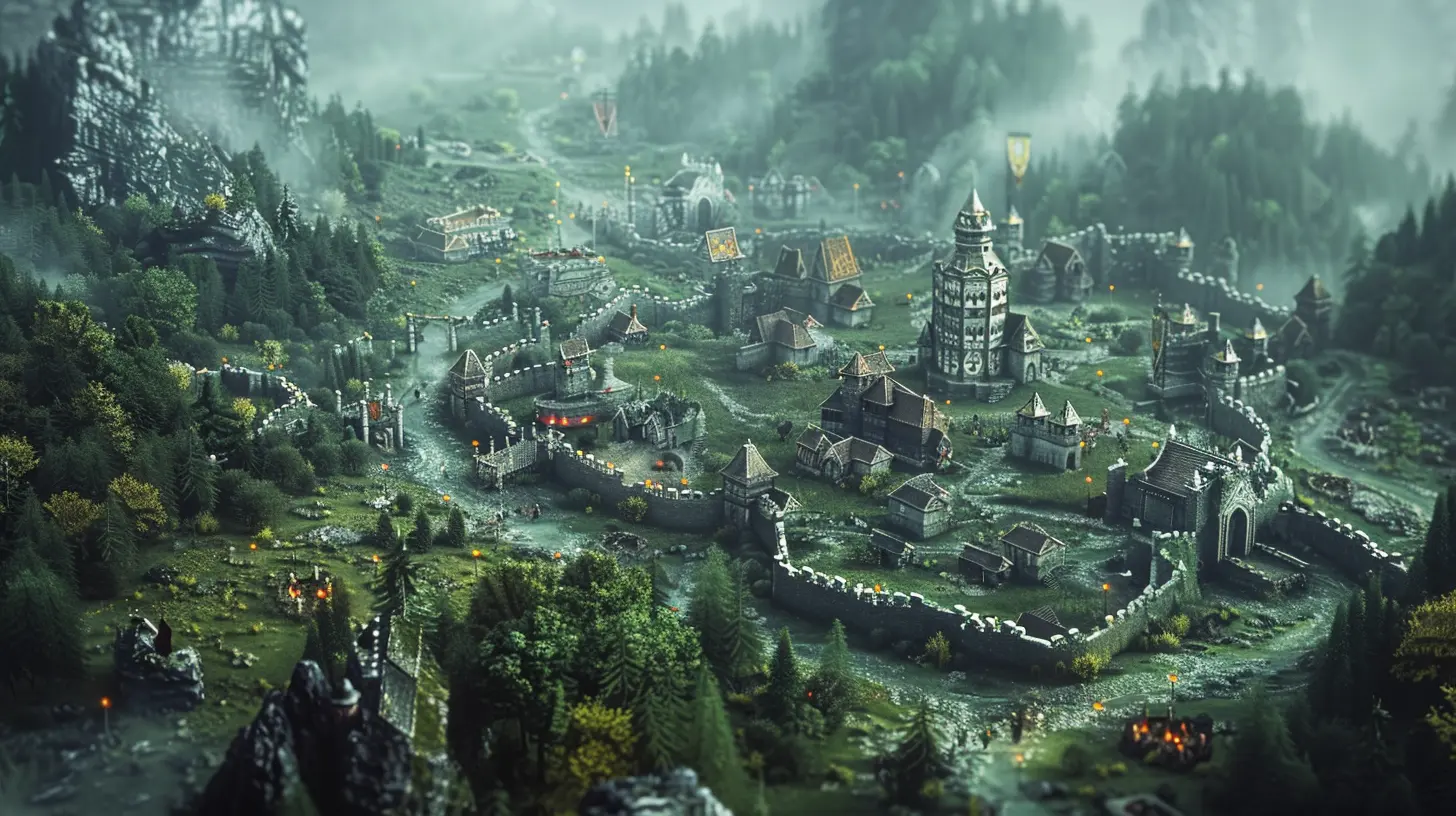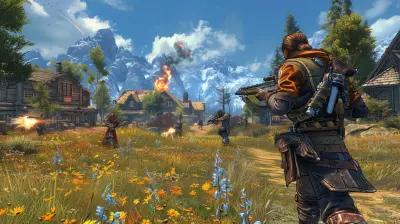Mastering Silent Communication in Cooperative Games
10 July 2025
Ever sat on the edge of your seat, controller in hand, desperately trying to signal your teammate without saying a word? We’ve all been there. Whether you're slinging spells in a dungeon crawler or sneaking through enemy territory in a stealth mission, cooperative games often throw you into moments where talking just isn’t an option. That’s when silent communication becomes your secret weapon.
In this article, we’re diving headfirst into the world of nonverbal gameplay tactics—how to read your teammates, send signals without saying a thing, and why mastering the art of silent coordination can make or break your team. So buckle up, because by the end of this, you'll be nodding, pinging, and crouch-dancing like a true co-op legend.
Why Silent Communication Matters in Co-op Games
Let’s be honest—mics fail, voices get drowned out in chaos, or sometimes, you’re just playing with someone who’s AFK from the voice chat. Silent communication isn't just convenient—it’s crucial.In many cooperative games, especially those that emphasize strategy or stealth, a mistimed word or loud shout can disrupt the flow. Think of games like "Keep Talking and Nobody Explodes" (ironically), "Among Us", or even "Overcooked". Whether it's due to in-game limitations or personal preference, knowing how to ‘talk’ without speaking can mean the difference between glorious victory and hilarious failure.
The Psychology Behind Silent Communication
Before we jump into the how-tos, let’s geek out a bit on the brain stuff. Silent communication taps into something deeper: instinct, pattern recognition, and nonverbal cues. Our brains are wired to pick up on subtle signals like movement, timing, or even positioning.Ever notice how you can sometimes just tell what your teammate is about to do? That’s not magic, it’s microcommunication—those tiny cues we give off without even trying. In cooperative games, this kind of unspoken synergy is pure gold.
Common Forms of Silent Communication in Games
Alright, enough talk—let’s get practical. Here are some of the most common (and effective) ways players communicate silently in co-op games:1. Pings and Markers
Games like "Apex Legends" revolutionized ping systems with a wide variety of context-sensitive prompts. Need loot? Ping it. Spotted an enemy? Double tap. Want to go somewhere? Just point and click.Even games that don’t have such advanced systems usually include some form of map marker or signal. These are your bread and butter when words fail.
Pro Tip: Ping with purpose—don’t spam. One well-placed signal can say more than a dozen frantic tags.
2. Gestures and Emotes
Think Fortnite’s dance moves are just for show? Think again. Emotes, crouching, jumping, or circling an item can all communicate different things depending on the context.Ever seen a player crouch repeatedly in front of you? That’s the universal sign for “Let’s go!” or sometimes “Follow me!” Of course, it could also mean “I like your hat.” Context is everything.
3. Movement Patterns
Movement is an underrated method of communication. Hovering near a doorway might mean “watch this spot.” Sprinting ahead could indicate urgency. Moving back slowly might be a quiet plea for backup.Nailing this takes experience, but once you get the hang of interpreting movement, it becomes second nature.
4. Equipment Signals
Dropping ammo or armor, switching weapons, or pointing your camera at specific objects—these are subtle ways to say, “Here’s something you need,” or “Let’s prepare for what's coming.”Some games even include animation cues (like loading a specific item into a machine) that signal the next step without needing a word.
Games That Rely Heavily on Silent Communication
Some co-op games are built around the idea that you won’t always be able to speak. Let’s check out a few where mastering silent communication gives you a serious edge.1. Overcooked
You’re a chef in a chaotic kitchen—customers are yelling, food’s burning, and you can’t scream instructions fast enough. If you're lucky, you’ve developed a rhythm with your teammates: one slices, another plates, the third washes dishes. No words needed. It’s like a dance, but with more onions.2. Phasmophobia
This ghost-hunting game becomes 10x creepier when things go silent. When you’re in different rooms and radios go static, your only clues are flashlights, knocking sounds, and the sudden disappearance of your buddy. Silent cues like door creaks or EMF meters speak volumes.3. It Takes Two
This gem is all about timing and trust. The puzzles require constant coordination, yet sometimes there’s no time to talk. A quick jump here, a rope pull there—you’ll rely on pattern recognition and shared understanding to move forward.4. Deep Rock Galactic
"Rock and stone!" That’s about all you need to rally the troops. Much of the teamwork in this space-mining co-op game happens through signals, flares, and timing. Knowing when to dig, fight, or retreat—all while surrounded by alien bugs—is a silent language in itself.Building Chemistry with Silent Partners
Okay, so how do you actually get good at this? Here’s how you build the type of chemistry where you and your teammate are finishing each other's… movesets.1. Play Frequently Together
The more you play with the same people, the more you start to recognize their habits. You’ll learn their go-to strategies, their visual cues, and how they respond under pressure.It’s like learning to dance with a partner—you figure out when they’ll spin and when they’ll dip.
2. Develop Shared Rituals
Maybe two crouches means “Let’s wait,” or pinging the left side of the map always means “defend here.” Create your own team language.It doesn’t need to be complicated. In fact, the simpler it is, the faster you’ll act on it.
3. Watch Replay Footage
Some games let you rewatch your matches. Use that! Break down moments where things clicked—or didn’t. Look for missed signals and figure out how you can be clearer next time.It’s like reviewing tape in sports: you’re not just looking for highlights, you’re studying your unspoken playbook.
Silent Communication Pitfalls to Avoid
Let’s be real—silent coordination doesn’t always go smoothly. Here are some things to watch out for:1. Assumptions Gone Wrong
Just because you think a gesture means one thing doesn’t mean your teammate does. A quick jump might be, “Let’s attack,” but they think it means “Wait here.” Boom—disaster.Tip? Confirm with backup actions. Maybe jump and ping.
2. Over-Reliance on Signals
Signals are great, but they’re not magic. Don’t expect your silent cue to solve every problem. When all else fails, pause and regroup if possible. Or just type a quick message if the game allows.3. Spamming Emotes
Yes, spamming crouch or pinging like a lunatic can be funny, but it can also be confusing or distracting. Use your cues wisely. Think of it like seasoning—a little goes a long way.Leveling Up: Advanced Tactics for Expert Teams
Think you’ve got the basics down? Time for the next level of silent communication.1. Predictive Play
This is when you start acting before someone signals, because you already know what they're going to do. It's like reading between the lines of body language.If your teammate always flanks when they see an opening, you can start supporting that move automatically. No words. Just action.
2. Role Division
Some teams naturally fall into roles—one’s a scout, another’s a sniper, the third’s a builder or support. Assigning silent responsibilities helps everyone know what to expect without shouting it every round.3. Mastering the Game’s Visual Language
Every game has its own built-in signs—whether it’s UI changes, animations, or sound effects that can stand in for verbal cues. Learn to read these like a second language.For example, a shield bar going down? Probably time to pull back. Laser sight on your teammate? Time to duck. These subtle cues are communication gold.
Why This Makes You a Better Gamer (And Human)
Mastering silent communication in co-op games doesn’t just make you a better teammate—it sharpens your instincts, improves your focus, and forces you to be more aware of your surroundings.It’s like being in a live-action puzzle where every piece is a person—and you're solving it without speaking. You’ll start noticing patterns faster, reacting smarter, and cooperating more smoothly.
Plus, it’s just cool. There’s nothing quite like looking at your buddy, nodding silently, and executing a flawless maneuver like you’re in an action movie.
Final Thoughts
Silent communication is more than just a backup plan—it’s a core skill that can define how well you gel with your squad. Whether you're a seasoned gamer or just getting into your favorite co-op title, learning to “speak” without words gives you an edge that few casual players ever master.So the next time your mic’s off—or even when it’s on—try playing without saying a word. You might be surprised how much you can say without speaking at all.
Let your actions do the talking.
all images in this post were generated using AI tools
Category:
Cooperative GamesAuthor:

Luke Baker
Discussion
rate this article
2 comments
Verity McGivern
Great insights! Silent communication enhances teamwork significantly.
September 11, 2025 at 3:22 AM

Luke Baker
Thank you! I'm glad you found the insights valuable. Silent communication truly is key to effective teamwork in cooperative games!
Juliana Stone
This article captures the essence of non-verbal cues in cooperative gaming. Mastering silent communication not only enhances teamwork but also enriches the gaming experience, showcasing the strategic depth that arises when players truly understand one another.
July 14, 2025 at 3:29 AM

Luke Baker
Thank you for your insightful comment! I'm glad you found the article highlights the importance of non-verbal cues in enhancing teamwork and the overall gaming experience.


